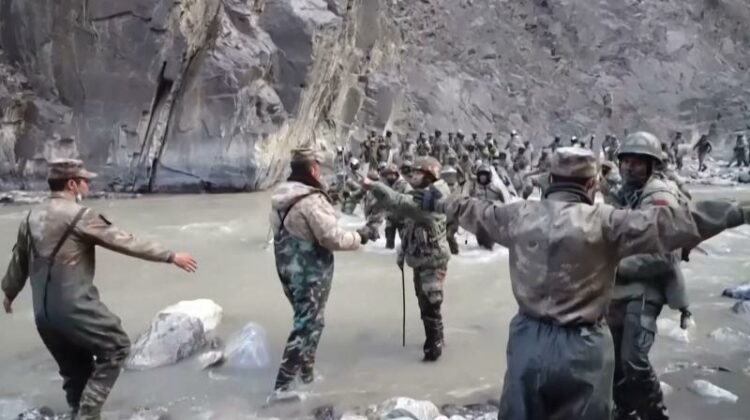Top military officers deployed along the Line of Actual Control in Eastern Ladakh are holding operational discussions to strengthen the preparedness in the region further.
The meeting is held on the third anniversary of the Galwan Valley clash in which India lost 20 troops while causing heavy damage to the Chinese Army and is attended by the Northern Army.
“Commander Lt Gen Upendra Dwivedi, 14 Corps Commander Lt Gen Rashim Bali and One Strike Corps Commander Lt Gen Sanjay Mitra along with other formations deployed there,” Army sources said here.
The meeting will discuss the preparedness of the force in the sector bordering China.
The Northern Army Command is in charge of the Ladakh sector and has been provided with a new formation in the form of the One Strike Corps headquartered in Mathura, which has its elements spread across the Northern parts of the country.
The government and forces did the reorganisation of the Army after the Chinese aggression of April-May 2020 along the eastern Ladakh sector.
More than 50,000 troops of the Chinese military have been deployed along the LAC opposite Eastern Ladakh since 2020. India has also deployed multiple new formations in the area to prevent any possible future aggression by the Chinese and prevent any such moves.
The infrastructure development in the area has also been hastened, and the world’s highest motorable road has been built in eastern Ladakh at the Umling La Pass.
The road has helped in promoting connectivity to the forward locations where Indian and Chinese troops have been deployed opposite each other for the last three years now.
After the Galwan Clash, India has deployed more and more of its troops to the Western Sector of the LAC. The Indian Army has set up artificial intelligence-backed surveillance systems which keep a close eye on 24X7 along the Line of Actual Control (LAC).
Drones, satellites, radar and ground sensors have been installed to provide constant feed along the 832 km-LAC in Eastern Ladakh. Twenty-seven more bridges were built by the Border Roads Organisation closer to the LAC. They were inaugurated in early 2023.
Until the Chinese decided to move additional troops right up to the LAC, the Indian Army used to guard the entire Eastern Ladakh with a division, i.e. only 15,000 troops belonging to the Leh-14 Corps. After the clashes, the troop strength had to be tripled along with their supporting elements. As of now, there are 50,000 troops deployed in the border region.
A Rashtriya Rifles Force was also inducted for rear area security.
The Indian Army has three large strike corps (1, 2 and 21 Strike Corps) apart from a fourth mountain strike corps. also called 17 Corps. Strike Corps are large formations consisting of 90,000 soldiers, These formations are heavily armoured and mechanised, with the primay objective being to deeply penetrate the enemy and capture of strategically important locations.
Until 2021, the three-strike corps were placed in the plains sector. But after the Galwan Clash of 2020, they were reoriented towards the northern sector.
The induction of the Strike Corps in Eastern Ladakh resulted in an increase in the deployment of heavy armour, such as tanks and Infantry Fighting Vehicles. Initially, only 4-5 armour regiments were deployed in the LAC. Currently, there are more than 10-12 armour regiments in the area, along with supporting elements.
Additional artillery regiments operating the M-777 Howitzer and K-9 Vajra tracked howitzer were inducted in the area. For ISR (Intelligence Surveillance and Reconnaissance) purposes, India has deployed its Nagastra Drone and the Israeli-built Heron and Harop drones.
New habitats for more than 22,000 troops and 450 armoured vehicles have been created, The government has also pushed forward to construct roads, advanced landing grounds, roads, tunnels and bridges in the border areas. All of this was completed by the Border Roads Organisation (BRO).
All the bridges on the Darbuk Shyok Daulat Beg Oldie road are being upgraded to Class-70 Specifications, which can carry any vehicle weighing more than 70 tonnes. Helipads have been constructed in Chushul, Nyoma, Thoise, and Thakung have been upgraded.




















Comments